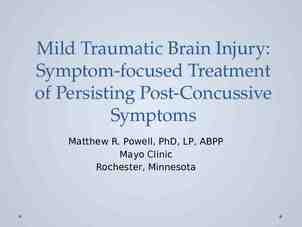SSUSH18 Evaluate Franklin D. Roosevelt’s New Deal as a response to the
12 Slides2.44 MB
SSUSH18 Evaluate Franklin D. Roosevelt’s New Deal as a response to the Great Depression and compare how governmental programs aided those in need. a. Describe Roosevelt’s attempts at relief, recovery, and reform reflected in various New Deal programs. b. Explain the passage of the Social Security Act as a part of the second New Deal. c. Analyze political challenges to Roosevelt’s leadership and New Deal programs. d. Examine how Eleanor Roosevelt changed the role of the First Lady including development of New Deal programs to aid those in need.
3 R’s- Relief, Recovery & Reform
Into to the New Deal In the first presidential election during the Great Depression, American voters rejected Herbert Hoover and voted in Franklin D. Roosevelt. Roosevelt used the name “New Deal” for his series of programs to end the Depression. He promised these programs would help different segments of the economy recover by addressing specific needs and weaknesses. This standard will measure your understanding of how Roosevelt’s New Deal affected the lives of the American people.
Tennessee Valley authority One of Roosevelt’s major New Deal programs was the Tennessee Valley Authority (TVA). This was established in 1933 to build dams and power plants along the Tennessee River and its tributaries. The Tennessee Valley itself runs through seven states, so the project was very large. The TVA built dozens of dams to control the environment by preventing disastrous floods. Each dam had its own power plants, parks, and navigation aids, and this construction created hundreds of jobs for unemployed workers.
Wagner act The Second New Deal refers to the programs President Roosevelt instituted after his original New Deal failed to completely fix the American economy. The National Labor Relations Act, better known as the Wagner Act, was one of the first reforms of Roosevelt’s Second New Deal. This law established collective bargaining rights for workers and prohibited such unfair labor practices as intimidating workers, attempting to keep workers from organizing unions, and firing union members. The law also set up a government agency where workers could testify about unfair labor practices and hold elections to decide whether or not to unionize.
Industrial unionism After passage of the Wagner Act, industrial workers began to unionize. The American Federation of Labor (AFL) was hesitant to organize industrial unionism, because it was committed to craft-based workers such as carpenters and railroad engineers. As a consequence, the Congress of Industrial Organizations (CIO) was created to represent industrial workers who felt they were not being represented by the AFL. The AFL and CIO clashed on and off before merging in 1955 to become the AFL-CIO that exists today.
Social security act One of the most important actions of the Second New Deal was the Social Security Act, which was passed in 1935. This law consisted of three components: 1. Old-age insurance for retirees aged 65 or older and their spouses, paid half by the employee and half by the employer 2. Unemployment compensation paid by a federal tax on employers and administered by the states 3. Aid for the disabled and for families with dependent children paid by the federal government and administered by the states
Huey long During his 12-year presidency, Roosevelt faced many challenges to his leadership and had many critics. Opponents of the New Deal came from all parts of the political spectrum. Some conservatives thought he had made the federal government too large and too powerful and that it did not respect the rights of individuals and property, while some liberals thought he had not gone far enough to socialize the economy and eliminate inequality in America. Perhaps Roosevelt’s biggest critic was Senator Huey Long of Louisiana. Long originally supported the New Deal, but he changed his mind and set his sights on replacing Roosevelt as president. Long proposed for every American a home, food, clothes, and an education, among other things.
Neutrality Act In Europe, World War II started long before America entered it. To prevent Roosevelt from involving America in what some saw as a European war, Congress passed a series of Neutrality Acts to make it illegal to sell arms or make loans to nations at war. The fourth of these acts, passed in 1939 in recognition of the Nazi threat to Western Europe’s democracies, permitted the sale of arms to nations at war on a “cash and carry” basis. This meant that buyers would have to pay cash and send their own ships to American ports to pick up the supplies, thereby keeping American ships from being sunk by the Germans.
Court packing bill The Judiciary Reorganization Bill of 1937, usually called the court-packing bill, was a law Roosevelt proposed to give presidents the power to appoint an extra Supreme Court justice for every sitting justice over the age of 70 ½. Roosevelt planned to use this bill’s powers to add more of his supporters to the Supreme Court to uphold his New Deal programs, but the version of the law passed by Congress weakened the power he desired.
Eleanor Roosevelt President Roosevelt’s wife, Eleanor, was very influential in her own right. She was interested in humanitarian causes and social progress, and she was very vocal about them during her husband’s time in the White House. She traveled all over the United States to observe social conditions so she could keep the president informed as to the state of the nation. As a supporter of women’s activism, she was also instrumental in convincing Roosevelt to appoint more women to government positions.
In assigned groups Create a poster on one of the leading individuals or agencies during the Great Depression and present to class. The reformers should include but not limited Eleanor Roosevelt, Huey Long and Tennessee Valley Authority. Such topics as Social Security Act, Wagner Act and Neutrality Act may be included in the presentations.

















